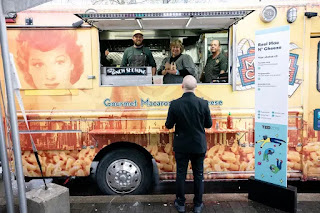 The New York Times this morning well described what is happening with the COVID-19 pandemic and how people will probably adjust their lives into the future. First, there seems to be a reversal of new cases from the south (Florida, Texas) to the north and mountain west. Why? Those states are getting colder and their populace is more and more staying indoors.
The New York Times this morning well described what is happening with the COVID-19 pandemic and how people will probably adjust their lives into the future. First, there seems to be a reversal of new cases from the south (Florida, Texas) to the north and mountain west. Why? Those states are getting colder and their populace is more and more staying indoors.- This virus will NEVER go away.
- The combination of vaccinations and the Pfizer pill to reduce hospitalization and death will simply make COVID-19 a type of flu that will return in the fall and winter.
- In fact, it appears that, already, the hospitalization rate for COVID-19 is half that of the seasonal flu!
- Already, unvaccinated children react to this ailment as only a mild flu.
- Mind you, if you are immunocompromised or 80 years and older, you need to be careful even after your regular booster, which could someday be part of your flu shot.
- A higher percentage of the population will wash their hands more and continue to wear masks for two reasons:
- Prevent others from catching your ailment, a practice that is universal in Japan.
- So that you will minimize the chances of being infected from any respiratory disease.
- Handshakes and hugging of non-family members will be minimized. The bowing of Japan will not replace physical contact, but fist and elbow bumps will stay, perhaps forever.
Scientists have found that 40% of white-tailed deer populations in the Northeast and Midwest U.S. have antibodies against SARS-CoV-2. This means that 40% of the population has had COVID-19. A similar study at Pennsylvania State University found that at least 30% of deer in Iowa were actively carrying Covid in 2020 — this figure had exploded to 80% in January 2021. While the virus doesn’t appear to make deer sick, it could still be bad news for humans as deer may end up acting as a ‘reservoir’ for Covid; this means that the virus could potentially mutate in the deer population and spread back to humans. However, scientists do not yet know if this is possible — stay tuned. (Source: NPR)
Avocados come under fire for their hefty carbon footprint
Chefs around the world are taking avocados off the menu in favor of more ecologically friendly alternatives like beans and seeds. Avocados take up an inordinate amount of water in farming, requiring 60 gallons to grow a single fruit. Since they need to be transported a long way from the tropical climates where they are usually farmed, they require temperature-controlled, energy-intensive shipping containers to ensure they don’t go bad on the way to the grocery store. The global demand for avocados is so high that locals can’t afford the avocados being grown on their own farms. Anti-avocado chefs are hoping to start a global trend away from avocados, which would be great not just for the environment but also for our pocketbooks. Avocado toast is getting expensive, y’all. (Source: TheHill)
Now on to my subject of the day:
Theme: "Sustainable Ocean Resources Development for World Food Supply & Reducing Global Warming Emissions
I will provide a weekly series on our Technology/Entertainment/Design TEDx Conference we will be virtually hosting from Hawaii on December 11. You can already access our website for details by clicking on:
https://www.ted.com/tedx/events/47313
You will see in the top right side that tickets are available. Click on Attend this event, where you will learn that there is no cost. Better yet, by signing up, we will alert you when it gets close to December 11.
- This a five-day gathering with better than average conference food, free, usually a buffet, although food trucks are available for lunch. Dinner is a bit more complicated, for you pick a topic for like-minded conferees at a local restaurant. If you are truly important, you are invited to a private lunch or dinner.
- The opening night party was said to be the ultimate indulgence. I'll detail in a future update.
- There are several off-site events, but these can cost extra, like test driving an autonomous BMW i3 prototype.
- There are robots all over the place.
- There is a bookstore to purchase books by speakers.
- Free lattes, cappuccino and massages, all day.
- There is only one theater, so the line is long. One advantage for being a Donor or Patron: you enter a special door and seat in the front. There is a line because there are more conferees than room in the theater.
- The press seats in the back two rows.
- The talks are 18 minutes long, but as goofs regularly occur, TED edits them for inclusion into their system of talks.
- Your name tag includes an optional tracker so that you can be found.
- You get a gift, like Rimowa luggage.
The 2020 conference was only available virtually. The next one will again be held in Vancouver, Canada, from April 10-14, 2022.
The TED organization opened up opportunities for special sessions at certain locations, and these are designated as TEDx events. We initially were planning to charge $20 for a program in the Art Auditorium on the Manoa Campus of the University Hawaii. However, this pandemic convinced us to make the whole thing virtual, and do this all for free.
Next week I'll provide other bits of information, like how many TED talks are online and who were some speakers.
-













Comments
Post a Comment